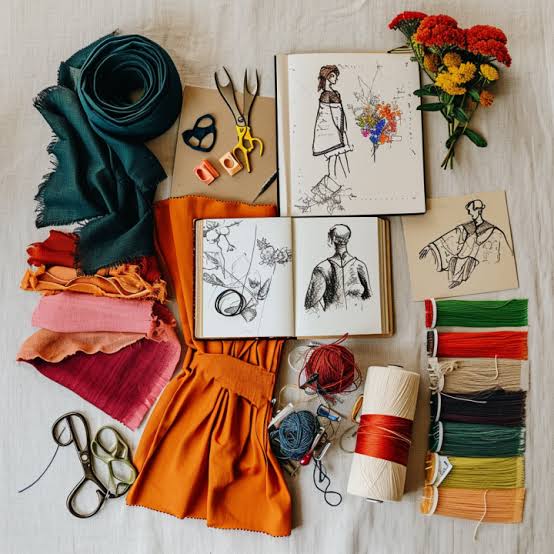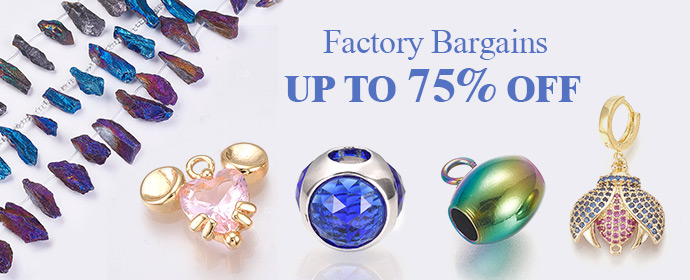Fashion isn’t just about following seasonal trends or browsing commercial collections anymore. It’s blossomed into a vibrant way to express art, tell cultural stories, and showcase the latest technology. As we move through the 21st century, modern couture sits at the top of this exciting change, turning into wearable pieces of art that grab our attention and push boundaries.
This in-depth guide dives deeply into the close relationship between fashion and fine art, carefully examining the creative makeup of today’s couture designs. We’ll journey from the initial ideas to the finished pieces, uncovering how fashion houses around the world are giving new meanings to beauty, creativity, and craftsmanship.

Photo credit: LinkedIn
1. Fashion as an Art Form: More Than Just Looks
Art traditionally found its home in galleries and museums, while fashion was confined to the wardrobes of the wealthy. However, as designers started to erase the boundary between canvas and fabric, fashion earned recognition as a genuine art form.
Take, for consideration, Alexander McQueen’s dramatic runway presentations or Iris van Herpen’s futuristic designs; these aren’t just pieces of clothing but wearable art exhibits. They evoke feelings, challenge our thinking, and frequently ignite crucial cultural dialogues.
Crucial Takeaway: Similar to painters and sculptors, fashion designers employ elements such as color, texture, volume, and shape to create visual stories.

Photo credit: Textile Focus
2. Unraveling the Essence of Haute Couture
Crafting haute couture is a deeply personal and incredibly demanding endeavor. Each couture garment is the culmination of countless hours of meticulous work and the distillation of years of honed expertise. Let’s delve into the intricate steps that form the very essence of a couture creation:
a. Finding Inspiration and Weaving a Tale
Every couture piece starts with a spark of inspiration. This could be ignited by various sources; perhaps an art movement like surrealism or abstract expressionism, a historical figure, a current event, or even a personal recollection.
Consider, for instance, Jean Paul Gaultier’s collections. They frequently take cues from French street culture, sailor attire, and androgynous aesthetics, blending rebellion with a touch of nostalgia.
Designers carefully assemble mood boards, bringing together diverse elements like photography, vintage fashion, tactile fabrics, evocative poetry, and carefully curated color schemes. The aim is to create a captivating story that will resonate through every carefully placed stitch of the finished garment.

Photo credit: Studio 104
b. Sketching and Digital Illustration
Once the concept is locked in, designers start sketching their ideas. These days, many designers use digital tools to refine their work and boost accuracy. Programs like CLO 3D or Adobe Illustrator make it possible to see how a garment will flow and move.
During this phase, the designer can play around with proportions, color palettes, and the placement of decorative elements like embroidery, pleats, and cutouts.

Photo credit: The Impression
c. Textile Innovation and Material Sourcing
The choice of fabric is paramount in couture. Designers frequently team up with textile experts to craft one-of-a-kind materials, ranging from hand-painted silks to advanced 3D-printed mesh fabrics.
Couture houses seek out exclusive materials, such as:
- Chantilly lace.
- Feathers that have been hand-dyed.
- Beads and sequins sourced from Parisian workshops.
Sustainable, plant-derived leathers.
These distinctive materials enhance the unique, sensory experience of each design, both in how it feels and how it looks.

Photo credit: Facebook
d. Draping and Pattern Cutting
Couture designers often choose to drape fabric directly onto a dress form instead of relying on pre-existing flat patterns. This hands-on, almost intuitive approach lets the garment develop naturally, directly influenced by the body’s curves and how it moves.
Highly skilled pattern makers then step in, transforming these artfully draped creations into meticulously detailed templates. These templates are essential for cutting the fabric accurately. This stage is vital; the construction has to perfectly realize the designer’s artistic vision while still being comfortable and wearable.

Photo credit: Fashion Forum
e. Handcrafting & Embellishment
High-fashion houses such as Chanel and Dior rely on the skills of “les petits mains,” which translates to “the little hands.” These are highly skilled artisans who are experts in delicate crafts like embroidery, beadwork, lace-making, and adding the final finishing touches. It’s not uncommon for these artisans to dedicate hundreds of hours to decorating just one garment.
Some well-known embellishment methods include:
- Tambour beading, a technique that uses a tiny hook.
- Appliqué lace, where lace is sewn onto the fabric.
- Smocking and ruching involve gathering and pleating fabric.
- Feather embroidery uses feathers to create intricate designs.
The designers carefully select each of these techniques to see how they contribute to the overall story and feel of the garment.

Photo credit: Harper’s BAZAAR
f. Trying it On and the Grand Finale
After it’s all put together, the garment is tried on again and again. This is especially important since haute couture is made to fit just one person perfectly. The result is pure artistry, hugging the body like a second skin and showcasing the designer’s unique style and vision.

Photo credit: missohee.com
3. Fashion’s Crossover with Other Artistic Worlds
Fashion isn’t just borrowing ideas from other art forms; it’s teaming up with them.
Fashion and Sculpture: Designers such as Issey Miyake and Hussein Chalayan use fabric as if it were clay, playing with volume, forms, and geometric patterns, much like sculptors.
Fashion and Architecture: Zaha Hadid’s architectural designs have influenced fashion, resulting in looks that are both fluid and sharp.
Fashion and Painting: Labels like Prada and Valentino are often inspired by the works of famous painters like Klimt, Van Gogh, and Basquiat, incorporating elements from their art into their designs.
These days, catwalks are starting to look more like art exhibits, and high-fashion shows are often more like performance art events.

Photo credit: Voir Fashion
4. Digital Couture: Fashion’s New Horizon
Fashion is stepping into a whole new realm, blending the physical and digital worlds in what’s being called “phygital” fashion. Designers are pushing the limits with stuff like:
- Letting you “try on” clothes using AR and VR
- Selling digital-only garments as NFTs
- Creating designs with the help of AI
- Even making clothes using 3D printers (like in those crazy cool van Herpen and Balenciaga collections)
This isn’t just some fad; it’s a complete game-changer for how we think about, buy, and collect fashion.

Photo credit: Medium
5. Sustainability: The Ethics of Couture
High fashion hasn’t exactly been known for its eco-friendliness in the past, often seen as pretty wasteful. But things are changing! Lots of designers today are embracing green practices that are kinder to our planet. They’re doing this in some cool ways, like:
- Using recycled fabrics
- Embracing slow fashion, which is all about quality over quantity
- Giving old clothes a new lease of life through upcycling
- Ditching harmful chemicals for natural dyes and biodegradable fabrics
Designers like Stella McCartney and Marine Serre are showing us that fashion can be a beautiful art form and also good for the planet.

Photo credit: Dazed
6. Couture: More Than Just Pretty Clothes
These days, high fashion isn’t just about creating gorgeous garments; it’s about sending a message. Designers are using their work to make statements on all sorts of important issues, like:
- How we see gender and how those lines are blurring
- Embracing all different body types
- The growing problem of climate change
- Social and political movements
For instance, think about Viktor & Rolf’s “NO” dresses or Pyer Moss’s collection honoring Black inventors. These pieces are powerful examples of how fashion can communicate so much without actually using words.

Photo credit: ELLE
7. Couture Collectors: New Patrons of Fashion Art
Fashion lovers, much like art collectors, are snapping up haute couture pieces these days. But it’s not just about wearing them; it’s about safeguarding these treasures, investing in their future value, and sometimes, even putting them on display.
Big-name museums such as the Metropolitan Museum of Art, the Victoria & Albert Museum, and the Musée des Arts Décoratifs are increasingly showcasing fashion as a form of fine art. On top of that, celebrities, royalty, and private collectors are now ordering up unique, one-off creations that will never be produced again.

Photo credit: WWD
Frequently Asked Questions (FAQs)
Q1: Why is fashion “art”?
Fashion is art when it transcends functionalism to define an idea, emotion, or statement. Fashion uses visual ingredients, form, color, texture, and symbolism in narrating stories similar to those in a painting or sculpture.
Q2: How is couture unique compared to ready-to-wear fashion?
Couture is custom, often by hand, and in all instances, a one-of-a-kind exclusive. Ready-to-wear (prêt-à-porter) items are produced in bulk standard sizes. Couture emphasizes workmanship and single-unit production.
Q3: Is fashion sustainable?
Yes, especially in couture, where the slow fashion process already comes into play. Fashion sustainability is actual through fair sourcing, ethical production, reducing waste, and everlasting design.
Q4: How do fashion designers collaborate with artists?
- Designers collaborate with artists through
- Collaborative collections (e.g., Louis Vuitton x Yayoi Kusama)
- Shared studio spaces
- Runway show installations
- Cross-medium projects like performance art or film

Photo credit: My Focal
Final Thoughts: The Future of Fashion as Art
As fashion becomes more inclusive, digital, and environmentally conscious, its potential as an art form expands. Modern couture is not just about clothing; it’s a complete sensory and intellectual experience. It invites viewers to reflect, feel, and engage with both the designer and the world around them.
In this golden age of fashion creativity, couture is securing its rightful place in the pantheon of fine art. Whether you’re a student, a collector, or simply an admirer, exploring the artistic DNA of fashion is an enriching journey worth embarking on.
Ready to dive deeper into fashion as art? Stay tuned for more insider guides, designer spotlights, and style analysis on this fashion-rich platform.

Photo credit: Fashion Link
Author: Raja Bahar Khan Soomro
Further Suggested Readings
4. Fashion Designing 101: Master the Art of Creativity, Innovation, and Skills to Succeed
Recommended1 recommendationPublished in apparel, Bathing Suits, Bridal, celebrity fashion, Our Fashion Passion, Petite, Plus Size, Pop Fashion, Shoes, street style, Uncategorized








